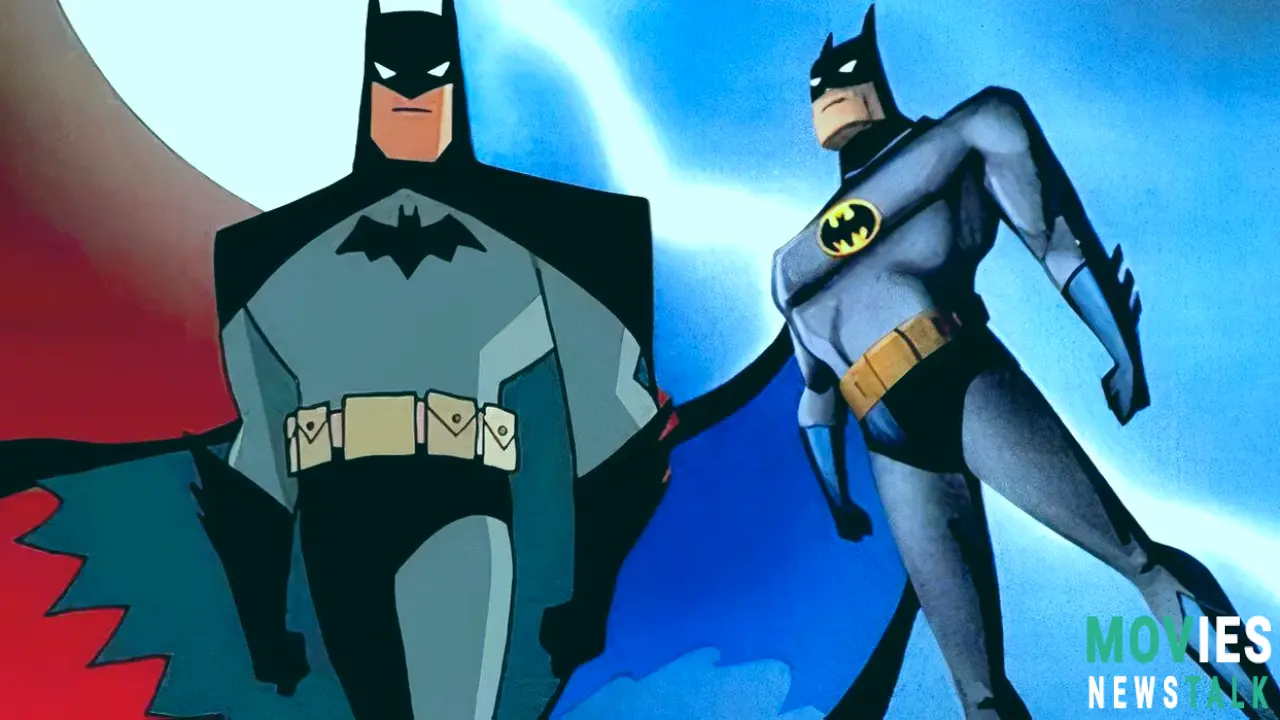Is The New Batman Adventures Actually Part of Batman: The Animated Series?
A Tale of Two Batmans: Untangling the BTAS/TNBA Relationship
Fans have debated this forever! Are The New Batman Adventures (TNBA) and Batman: The Animated Series (BTAS) one big, happy Bat-family, or are they separate entities? Both feature the Dark Knight, familiar villains, and share the same amazing production team, so you'd think it’s a simple "yes". But, significant differences —like art style, tone, and narrative focus—have created confusion. Let’s dive into the madness and examine the key points of both shows that makes the answer a complex "maybe"!
BTAS, a 1992 Fox Kids hit (85 episodes until 1995), remains a legendary animated show. Its dark tone , incredible noir aesthetics and amazing writing skills elevated cartoons; those are what made it incredibly memorable. TNBA came later (1997, on The WB, with updated character designs ). While many of those things like the voice actors and characters themselves stayed similar; other things were significantly changed to make the changes both justified and noticeable. This change also created significant debate regarding both the characterizations themselves as well as the overall narrative, even after decades passed.
Arguments FOR TNBA Being Part of BTAS Canon
There's plenty of evidence connecting these! The same production team led by the legendary Bruce Timm remained central to TNBA, along with writers Paul Dini and Alan Burnett. The creative core was practically the same – showing a deeply similar creative direction! That consistency hints at an organic continuation of the same storytelling universe.
Then there’s the voice cast. Kevin Conroy (Batman) and Mark Hamill (Joker)? They returned; it made sense, fans wanted it. Several other cast members, too. Keeping the same voices enhances that amazing continuity and creates more immersion. It also means there’s that nostalgic appeal.
And finally – the actual storyline! TNBA picks up from BTAS. Dick Grayson becomes Nightwing. A new Robin (Tim Drake) arrives. It strongly implies it's more of an ongoing story arc which has several narrative plotlines continued and continued over these productions; making many feel that it does add on more meaningfully to that original source material than to create a reboot for a separate production, generating greater value over a longer timeframe.
Arguments AGAINST TNBA Being Part of BTAS Canon
Now, hold your horses! It's not all sunshine and Batarangs. TNBA’s art style shifted away from BTAS’s dark, detailed look to a sleek, more modern aesthetic. The iconic characters are given brand new designs with completely altered proportions. Even the Joker's look totally changed. This shows deliberate attempts at changing elements significantly, and there’s much to discuss. It feels far more distinct and unique as a standalone production. And all this visual overhaul does showcase significant artistic differences. It was also aired on a very different network with vastly different constraints, and audience target age demographics. The WB network targeted younger audiences!
It makes a meaningful difference: TNBA's tone is lighter, and faster-paced. While BTAS featured thoughtful and somewhat sophisticated storylines, TNBA goes for intense action and high-octane adventures. That focus shifts to this intense action; while those darker, thought-provoking plot points had reduced impact; yet many found these more accessible for their targeted viewers.
There was a network-imposed change which involved artistic requirements: this transition involved changes that had never been discussed; but makes many suspect these weren’t merely artistic choices. They likely became more commercially driven: producing this content to cater better toward younger viewers; especially because of how those aspects changed entirely to fit this newly imposed format and direction.
What the Creators Say: A Sequel, but a Separate Series
The creators call TNBA a sequel! Bruce Timm stated TNBA was a direct follow-up, just modernized, even adding these updates, and re-imagined elements were created with a deliberate intent. However, he mentions that BTAS already ended officially, generating those subtle changes to make TNBA a meaningful continuation; even with slight changes intended.
It made a noticeable difference because they weren’t bound by the same standards or format and because The WB network allowed those creators way more artistic freedom compared to what they were able to accomplish previously; making this reimagining, although questionable for many fans of that original, iconic storyline. And you'll notice, many places list TNBA as part of BTAS in DVD sets.
Conclusion: A Sequel, Yes…But Canon? Maybe!
So, are they connected? That's a strong YES, folks. It has creative choices, and characters from one that transition meaningfully into another! However, if the series can be interpreted as an absolute canon? That's trickier! That question needs another consideration and is open to debate.
The creative staff says that TNBA continues the story from BTAS. But changes in art styles, tone, and network context mean TNBA has a noticeably separate feel! Ultimately, viewing them as two series that enhance each other; these are related universes rather than two productions which completely exist as one continuous entity is the most satisfactory answer, offering both context while accepting their fundamental creative differences. Enjoy them as one expansive Batman adventure, appreciating how creative direction changed meaningfully but was connected nevertheless.

